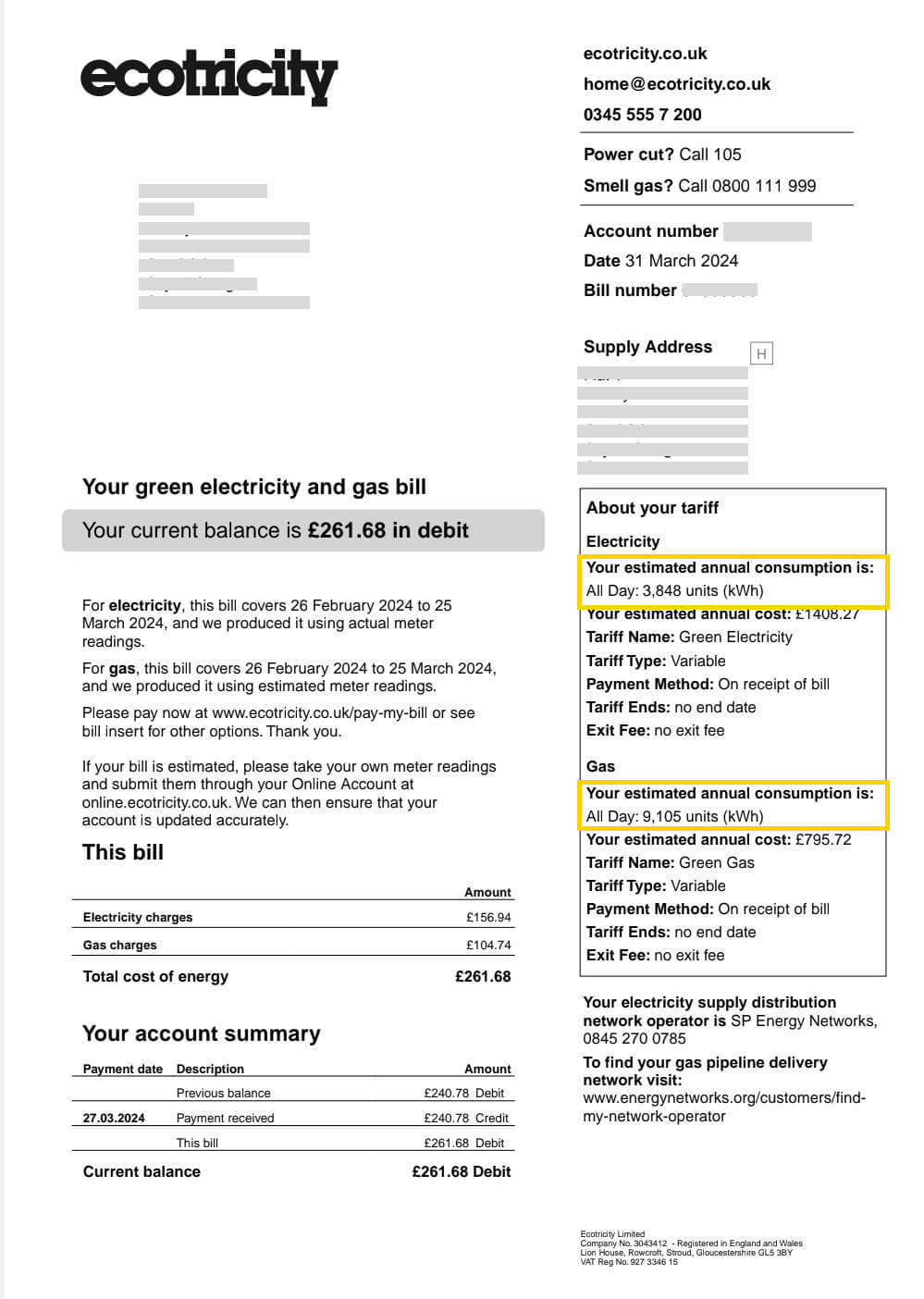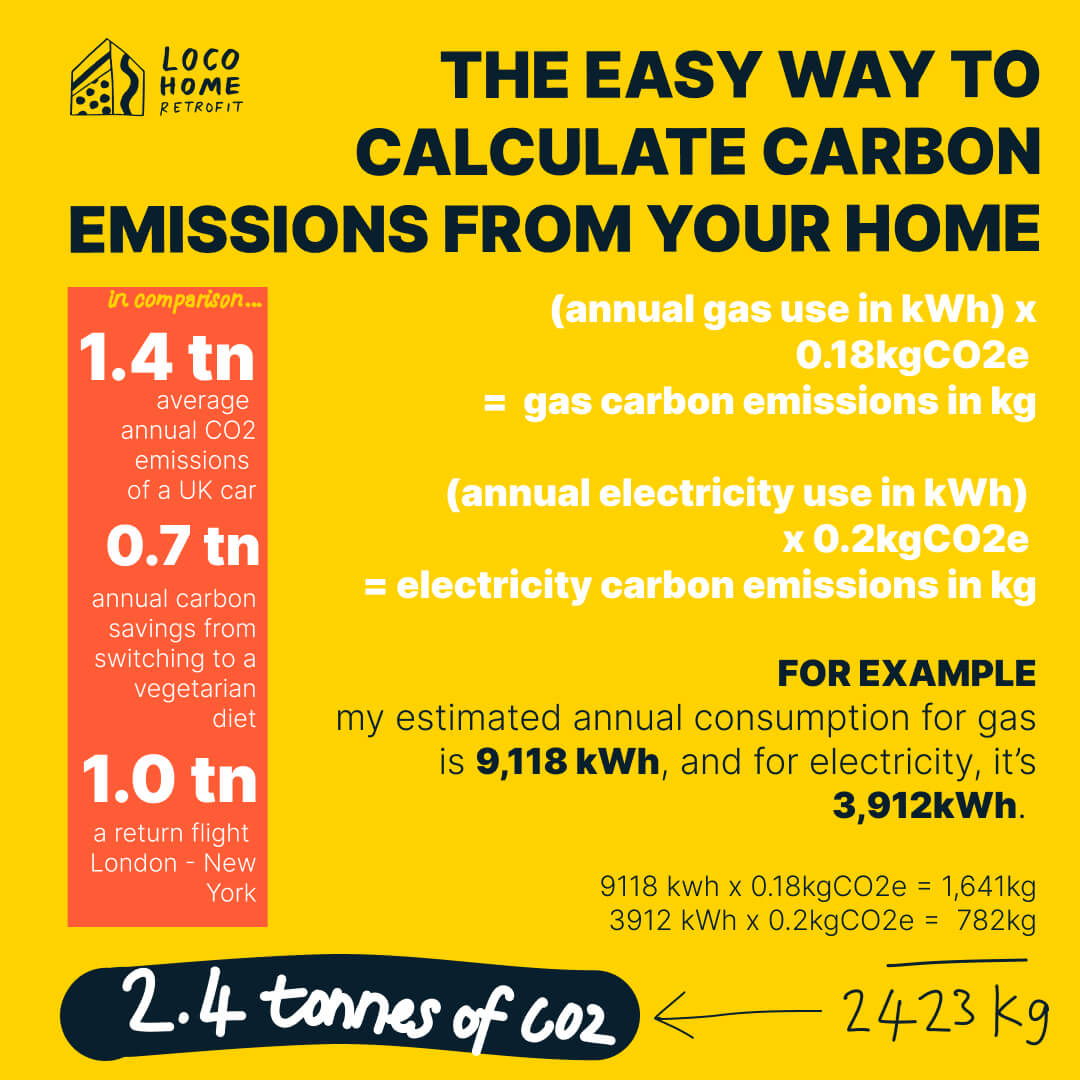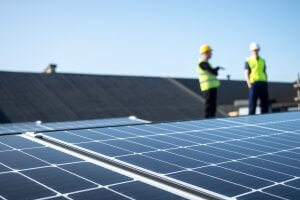For most of us, the important number on our energy bill is how much we need to pay. However, tracking energy use, not cost, is key to improving your home’s energy efficiency, saving money and reducing carbon emissions.
If you are retrofitting your home and you want to see the impact of the improvements you’re making, having before-and-after energy use helps you see the changes clearly and accurately calculate savings.
What is energy use and why is it important?
Energy use, or energy consumption, indicates how much energy your household uses in a given period of time. The standard unit for measuring energy is kilowatt-hours (kWh). Most homes are connected to gas and therefore their energy bills will provide annual energy use for gas and electricity as separate amounts.
In order to calculate your bills, energy providers take your energy use and apply a tariff rate. This tariff rate can change (variable) or stay fixed, depending on which tariff you are on. The rate for gas and electricity is different – electricity being around 4 times more expensive than gas. Then you have standing charges – how much you pay for being connected to gas and electricity – charged at a daily rate.
When you book a home assessment with Loco Home, we ask for your annual usage for both gas and electricity in kWh. These two measurements give an accurate snapshot of your current energy use, unaffected by changing tariffs.
Knowing this figure is your starting point for seeing the impact of any retrofit measures you implement.
In comparison, only keeping track of costs will leave you guessing the impact of changing energy prices against the impact of your improvements. For example, if energy prices rise and at the same time you insulate your attic, you might see little difference in your energy bills. Tracking your energy use allows you to see what savings you’ve made.
Monitoring your energy use also means you can measure the carbon savings of the improvements you make – read on for more information on how to do that.
Where can I find my annual usAGe in kwh?
Each energy provider has a different set-up for showing your energy use. Usually annual usages (in kWh) can be found on your energy bill or statement, under a heading like ‘Your Gas Tariff/Your Electricity Tariff’ – they may be on the second or third page. Sometimes, you have to log in to an online account or app to find them (if you’re with OVO for example).
If you’re struggling, you can always contact your supplier or look for guidance on their website. If you’re in the process of booking a home assessment with Loco Home, you can also contact your Loco Home surveyor for assistance.

What does my annual usage say about my energy use?
To get a handle on what your annual usage means, it’s helpful to know what is typical for a household of your size.
As a guide from Ofgem for households using gas for heating:
For a smaller household (small house or flat with 1-2 occupants), typical usage in the UK is 1,800kwh electricity and 7,500kwh gas
For a medium household (2-3 bedroom house with 2-3 occupants), typical usage in the UK is 2,700kwh electricity and 11,500 kwh gas
For a large household (4+ bedrooms and 4-5 occupants), typical usage in the UK is 4,100kwh electricity and 17,000kwh gas
How does your household compare?
How much is my energy use contributing to climate change?
Each kilowatt hour (kWh) your home uses has an associated carbon footprint. You can use the “carbon factor” to easily calculate your carbon footprint. For electricity, this is 0.2 kg carbon dioxide per kwh and for gas, it’s 0.18 kg carbon dioxide per kwh.
For electricity, multiply your annual usage in kwh by 0.2 kgCO2e to get the mass of carbon dioxide released in kg. Then divide that figure by 1000 to convert it to tonnes.
For gas, multiply your annual usage in kwh by 0.18 kgCO2e to get the mass of carbon released in kg. Then divide that figure by 1000 to convert it to tonnes.
Add the two together to get the total emissions
For example, a typical medium household in the UK uses 2,700 kwh electricity and 11,500 kwh gas.
For electricity (2700 kwh x 0.2 kgCO2e) / 1000 = 0.54 tonnes CO2e
For gas (11500 kwh x 0.18 kgCO2e) / 1000 = 2.07 tonnes of CO2e
Their total CO2e emissions is the sum of gas and electricity emissions so 2.61 tonnes. By point of comparison, the average car in the UK emits 1.6 tonnes of carbon dioxide per year.
This method can be applied to any time period, if you have the energy usage for that period.
Some energy providers, like Octopus and Ovo, allow you to track your energy usage closely on apps connected to your smart meter. Or you can track your energy usage by taking meter readings.

Would switching to a heat pump impact my carbon footprint?
Switching to a heat pump reduces your carbon footprint by around 65%.
The carbon intensity of electricity is dropping every year as more renewables such as wind farms are built. It is now just above that of gas.
However, it’s still the case that electricity is more carbon intensive than gas, per kWh. So how is electrifying your heating – switching to a heat pump – cleaner than relying on gas?
The answer is that heat pumps are much more efficient than boilers so when you switch to a heat pump, your energy usage decreases, and with it, the carbon emissions of your home.
How would a heat pump impact my bills?
As mentioned, gas is currently around a quarter of the price of electricity – however heat pumps are more efficient than gas boilers. So which is cheaper to run – a heat pump or a gas boiler?
Modern gas boilers operate at around 85% efficiency. On the other hand, with careful installation, heat pumps operate at over 300% efficiency. If the gas meter is removed the standing charge is eliminated and most homes will see bill savings. If you use a ‘time of use’ tariff, savings increase further.
A really well designed heat pump system can operate at higher efficiencies, around 400%, which translates to even bigger savings.
A Loco Home whole home plan is designed to help you take the right steps to maximise the efficiency of your heat pump, helping you achieve these savings on your bills.


